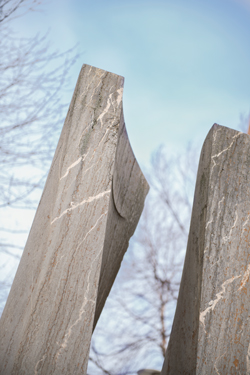Think back to the science classes you took as a child. What do you remember about them? Did you watch a caterpillar spin a cocoon and emerge a butterfly, or a tadpole grow into a frog? Did you turn baking soda and vinegar into a fuming volcano, or set off a homemade hot air balloon from the school parking lot? Did you feel a sense of wonder as you watched the world work its unique magic?
That’s the sense of wonder the late Homer W. Schamp, Jr., UMBC’s first dean of the faculty, professor emeritus of education, and trained physicist, pursued science with, and one he sought to instill in both his students and his own children. His wife Juliana Reese Schamp, who worked on important sociological research for the state of Maryland, treated life the same way, until her passing in 2009.
With the Juliana and Homer Schamp Memorial Scholarship, their sons, Brough and David Schamp, hope to keep their parents’ legacy of intellectual curiosity alive in the next generation of K-12 science educators.
Throughout his life, Dr. Schamp, a former College Park physics professor who joined UMBC in 1965, emphasized early education as a crucial part of a child’s intellectual development. His own introduction to science began during his childhood in rural Ohio, when, according to his son David, he became fascinated with the engineering of farm equipment. It’s a curiosity he emphasized to the education classes he taught here, and something he brought up his own children with as well.
“He exposed us to all kinds of different things as we were growing up,” says Brough. “Mushroom hunting, […] botany, the stars, everything. […] His main field was physics, which is really pretty abstract, but what he really was interested in was the phenomenal, real world that we live in.” After his retirement, Brough says, Dr. Schamp built several kinetic sculptures and interactive physics-based artworks, including a large kaleidoscope on display at the American Visionary Art Museum in Baltimore.
Brough shares his father’s belief that science “should be a hands-on subject,” and says that computers and technology can create a distance between students and the physical world around them.
“The kids should be inspired by something they saw, heard, felt, experienced,” he says. “[That] inspiration is something that is often lost if you’re just looking at something on a computer and answering questions.”
In keeping with his philosophy on education, Dr. Schamp made sure to hire only the highest-quality professors, and it’s doubtful that UMBC would be the hub for innovative teaching and experiential learning it is today without the Schamps’ early influence.
“UMBC was my father’s life’s work and both of my parents conceived of it as a first rank teaching institution,” David says. While his mother, Juliana, was never a faculty member, she was “instrumental in [UMBC’s first faculty] being hired, as recruitment usually began as an evening in our home where my parents could converse [with candidates] on almost any topic.”
Giving back to UMBC seems to run in the family: Homer and Juliana Schamp established the Joseph D. Reese Memorial Prize, a biennial award given to history students, in memory of her father. “It seemed only natural to want to contribute to a place so dear to [our parents],” says David.
He agrees with his brother that their parents raised them to be thinkers, to ask questions.
“I often later felt I had learned my most important lessons at home — specifically how to learn — [and] that curiosity and thoroughness were rewarding and that it had to come from within. Knowing how to learn is the most crucial skill a teacher can pass on and my parents really encapsulated that skill. I would hope any future teachers would want to engender that in their pupils,” he says.
We don’t know exactly what science education will look like when the first Schamp scholar teaches their first class, but we do know that they’ll have the intellect, leadership, and natural curiosity to inspire a new generation of learners.
—Julia Celtnieks ’13
Make a gift to UMBC today, and help inspire a new generation.
Tags: Brough Schamp, CNMS, COEIT, David Schamp, Homer Schamp, Juliana Schamp, K-12, scholarships, Science Education

